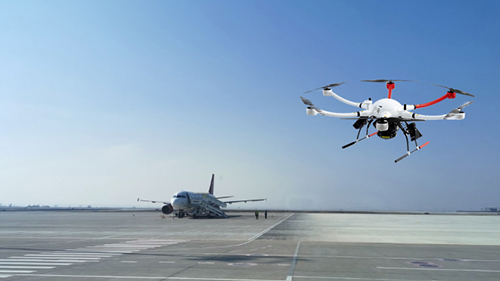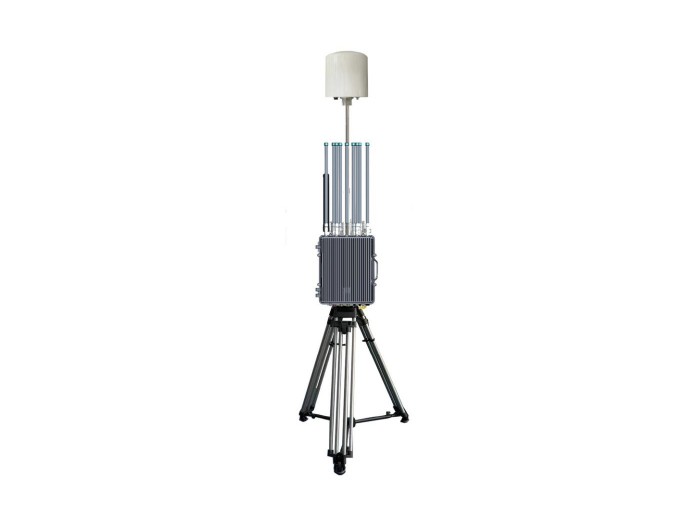How to Effectively Use a UAV Frequency Detector for 800 MHz Signals
In today’s fast-evolving drone industry, ensuring seamless communication and signal integrity is a critical challenge for UAV operators. One common pain point is interference or loss of control signals in the 800 MHz band, which many UAVs utilize for telemetry and remote control. The need to accurately detect and analyze radio frequencies around 800 MHz has spurred demand for specialized UAV frequency detectors that can help identify signal disruptions and optimize communication systems. Whether you’re a commercial drone pilot, security professional, or RF engineer, understanding how to use a UAV frequency detector at 800 MHz is vital for maintaining flight safety and operational efficiency. This guide will walk you through the essentials, from understanding the technology to practical applications, ensuring you’re equipped to tackle UAV communication challenges confidently.
What is a UAV Frequency Detector for 800 MHz?
A UAV frequency detector operating in the 800 MHz range is a specialized device used to detect, analyze, and monitor radio frequency signals commonly employed by drones for communication and remote control. The 800 MHz band is popular due to its balance between range and penetration capabilities, making it ideal for over-the-horizon control and telemetry transfers. These detectors scan and assess the signal environment to pinpoint interference sources or unauthorized transmissions that could jeopardize UAV operations.
For example, unmanned aerial vehicles (UAVs) used in search and rescue missions or industrial inspections rely heavily on stable 800 MHz signals. According to a report by the Federal Communications Commission (FCC), continuous monitoring of frequencies around 800 MHz can reduce communication dropouts by up to 30% in congested urban environments. By employing a UAV frequency detector, operators can proactively identify and mitigate potential signal conflicts, enhancing mission reliability.
Key Features of 800 MHz UAV Frequency Detectors
- Wide frequency scanning to cover the entire 800 MHz range and adjacent bands
- Real-time signal strength analysis with signal-to-noise ratio metrics
- Compact and portable form factor suitable for field use
- Interference detection and alert systems to prevent signal loss
- Data logging capabilities for post-flight analysis
Benefits of Using an 800 MHz UAV Frequency Detector
Integrating a frequency detector into UAV operations delivers several key advantages that improve safety, compliance, and performance:
- Interference Identification: Detects unauthorized or competing signals within the 800 MHz spectrum, allowing UAV pilots to avoid disruptions.
- Enhanced Signal Reliability: Assists in selecting optimal frequency channels or timing to reduce dropouts, especially in dense RF environments.
- Regulatory Compliance: Helps verify that transmitted frequencies comply with national communication regulations, reducing legal risks.
- Operational Planning: Supports site surveys to understand local RF conditions before deployments, leading to better mission planning.
- Maintenance and Troubleshooting: Enables quick diagnosis of communication issues, facilitating timely technical support or equipment upgrades.
For instance, in a real-world application, a drone charter company monitoring 800 MHz transmission with dedicated detectors witnessed a 25% decrease in mission abort rates attributed to lost communications, highlighting the tangible benefits of these devices.

Step-by-Step Guide: Using a UAV Frequency Detector at 800 MHz
To maximize the value of your UAV frequency detector, follow these practical steps tailored for professional UAV operations:
1. Pre-Flight Frequency Scan
Before launching your UAV, conduct a comprehensive frequency sweep across the 800 MHz band. This pre-flight scan helps identify any strong interfering signals or unexpected transmissions nearby, enabling you to select clear frequencies or adjust the UAV’s channel settings.
2. Monitor Signal Strength During Flight
Utilize the detector’s real-time monitoring features to watch the signal quality as the UAV operates. Abrupt drops in signal strength or spikes in noise may indicate emerging interference, which you can address by adjusting flight paths or switching channels.
3. Post-Flight Data Analysis
Review the logged frequency data after completion of your mission. Analyze patterns of interference and signal degradation to inform future flight planning and equipment maintenance. This data-driven approach promotes continuous improvement in UAV communication strategies.
4. Addressing Detected Interference
When the detector flags persistent interference, investigate external sources such as nearby radio equipment, construction machinery, or unauthorized drone activity. Taking remedial actions—like relocating the launch site or reporting unauthorized transmissions—ensures safer UAV flights.
Recommendations & Best Practices for UAV Frequency Detection at 800 MHz
- Choose a Detector with Wide Dynamic Range: Ensure your UAV frequency detector can handle both weak and strong signals around 800 MHz for accurate analysis.
- Regularly Update Firmware: Keep your device’s software up to date to benefit from improved detection algorithms and regulatory compliance features.
- Conduct Routine Site RF Surveys: Frequent site analysis prevents unexpected frequency conflicts and enhances long-term operational reliability.
- Integrate Detector Data with UAV Telemetry: Combine frequency detection insights with flight control data for comprehensive communication monitoring.
- Contact Expert Support for Complex Interference: If persistent RF issues arise, reach out to professional consultants for tailored solutions.
Want to learn more about optimizing your UAV communications? Visit our website or contact us for a free consultation.
Conclusion: Elevate Your UAV Operations with Reliable 800 MHz Frequency Detection
Effective management of UAV frequency bands, especially the critical 800 MHz spectrum, plays an essential role in ensuring safe, compliant, and efficient drone missions. Employing a specialized UAV frequency detector enables operators to identify interference, optimize communication channels, and comply with regulatory standards, substantially enhancing operational confidence. Our company boasts extensive expertise in UAV frequency technologies, offering advanced detectors calibrated for 800 MHz monitoring. Don’t let signal uncertainties jeopardize your UAV missions—visit our website now or contact us today to learn how we can support your UAV communication success.
















